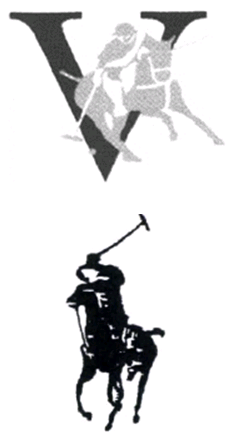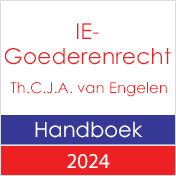Verwarringsgevaar tussen beeldmerken van een polospeler voor o.a. lederwaren
19-09-2014 Print this page Gemeenschapsmerk – Beroep ingesteld door de houder van het beeldmerk dat een polospeler weergeeft, voor waren en diensten van de klassen 3, 18, 25, 28, 41 en 43, en strekkende tot vernietiging van beslissing R 2240/2011 2 van de tweede kamer van beroep van het BHIM houdende verwerping van verzoeksters beroep tegen de gedeeltelijke weigering van de oppositieafdeling om dit merk in te schrijven in het kader van de oppositie die is ingesteld door de houder van de communautaire en nationale beeldmerken die een polospeler weergeven, voor waren van de klassen 9, 18, 20, 21, 24, 25 en 28.
Gemeenschapsmerk – Beroep ingesteld door de houder van het beeldmerk dat een polospeler weergeeft, voor waren en diensten van de klassen 3, 18, 25, 28, 41 en 43, en strekkende tot vernietiging van beslissing R 2240/2011 2 van de tweede kamer van beroep van het BHIM houdende verwerping van verzoeksters beroep tegen de gedeeltelijke weigering van de oppositieafdeling om dit merk in te schrijven in het kader van de oppositie die is ingesteld door de houder van de communautaire en nationale beeldmerken die een polospeler weergeven, voor waren van de klassen 9, 18, 20, 21, 24, 25 en 28.
Het beroep wordt verworpen. Het BHIM heeft terecht geoordeeld dat er sprake is van verwarringsgevaar tussen het aangevraagde beeldmerk van een polospeler en het oudere beeldmerk van - eveneens - een polospeler van Polo/Lauren. De tekens zijn visueel overeenstemmend en begripsmatig identiek. Ook zijn de betrokken waren identiek en is er sprake van een groot onderscheidend vermogen van het oudere merk, wegens het gebruik van eerdere gelijke merken voor een groot aantal waren.
43 As regards the global assessment of the likelihood of confusion, it must be borne in mind that, as has just been established, the signs at issue are visually similar and have, above all, been found to be conceptually identical. In addition, the goods in Classes 18 and 25 covered by the mark applied for and by the earlier Community trade mark and the goods in Class 28 covered by the mark applied for and by the earlier Benelux mark are identical. Furthermore, it is necessary to take into account the greater or lesser degree of inherent distinctiveness of the figurative element representing a polo player in relation to the goods concerned (see paragraph 33 above). Lastly, the applicant has not put forward any argument that makes it possible to take the view that the Board of Appeal erred as regards the enhanced distinctiveness acquired through use of the earlier marks for a number of the goods in Class 18 and for all the goods in Class 25. In particular, it must be pointed out that, although the figurative element of which the earlier marks consist is not inherently particularly distinctive in relation to ‘clothing, footwear, headgear’ in Class 25, the earlier marks have acquired enhanced distinctiveness through use in respect of those goods. By contrast, that is not true of the ‘whips, harness and saddlery’ in Class 18. In the light of a global assessment of all of those factors, it is necessary to uphold the Board of Appeal’s finding that there is a likelihood of confusion between the signs at issue in respect of ‘games and playthings’ in Class 28 and in respect of all the goods in Classes 18 and 25, with the exception of ‘whips, harness and saddlery’ in Class 18.
Lees het arrest hier.



























































